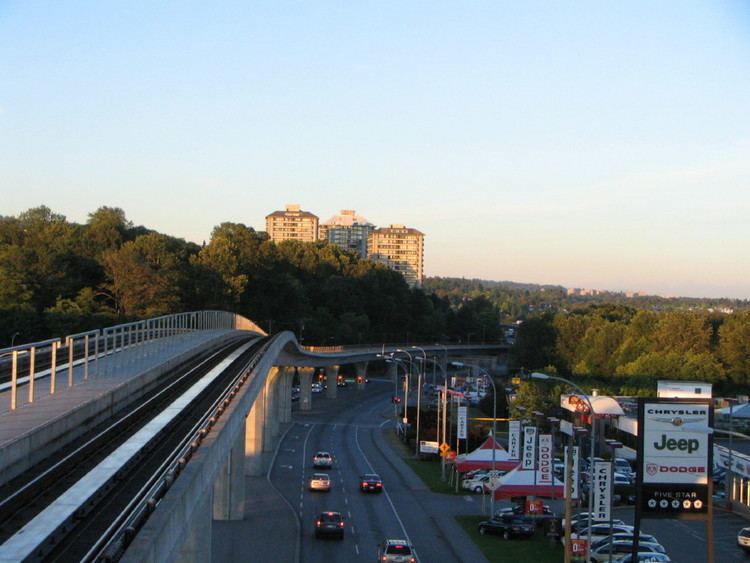Existed: 1941 – present Length 150 km | Constructed 1941 | |
 | ||
Major cities Vancouver, Burnaby, Coquitlam, Port Coquitlam, Pitt Meadows, Mission, Hope, British Columbia, Kent, Maple Ridge | ||
Highway 7, known for most of its length as the Lougheed Highway and Broadway, is an alternative route to Highway 1 through the Lower Mainland region of British Columbia. Whereas the controlled-access Highway 1 follows the southern bank of the Fraser River, Highway 7 follows the northern bank.
Contents
Map of BC-7, British Columbia, Canada
Highway 7 was first commissioned in 1941, and originally went from Vancouver to Harrison Hot Springs, following Dewdney Trunk Road between Port Moody and Port Coquitlam. In 1953, Highway 7 was moved to its current alignment between Vancouver and Coquitlam. Its eastern end was moved south from Harrison Hot Springs to Agassiz in 1956, and then east to Ruby Creek in 1968. Since 1973, Highway 7 has travelled to a junction with Highway 1 just north of Hope.
Unlike former Alberta premier Peter Lougheed's name, the name of the highway is pronounced /ˈloʊhiːd/ LOH-heed. The highway is named after Nelson Seymour Lougheed, MLA for the Dewdney District and the BC Minister of Public Works (1928–29) who ran a logging company in the area.
Route details
Highway 7's total length under the jurisdiction of the British Columbia Ministry of Transportation (MOT) is 118 km (93 mi). Highway 7 is signed as far west as Granville Street on Broadway in Vancouver, all the way east through Burnaby into Coquitlam, which is under the jurisdiction of the South Coast British Columbia Transportation Authority (TransLink). The section under the MOT's jurisdiction begins at the westbound exit with Highway 1 near Schoolhouse Street, with a total length of 2.3 km (1.4 mi). The highway then turns immediately northeast, meets with Highway 1 at the Cape Horn Interchange, and has an exit with United Boulevard. The highway leaves the MOT's jurisdiction 300 m (1000 ft) after the interchange. TransLink again has jurisdiction of Highway 7 from the point east of Ottawa Street to the point east of United Boulevard.
Highway 7 falls under the MOT's jurisdiction again after Ottawa Street, crossing over the Pitt River Bridge into Pitt Meadows. 6 km (4 mi) southeast of the Pitt River bridge, it crosses into Maple Ridge at Maple Meadows Way, and the highway then crosses into Mission another 20 km (12 mi) east. 9 km (6 mi) of Highway 7's entry into Mission, it meets a junction with Highway 11. 8 km (5 mi) east of the Highway 11 junction, Highway 7 leaves Mission over the Hatzic Pump Bridge.
27 km (17 mi) east of the Highway's eastern exit from Mission, Highway 7 enters the Municipality of Kent. 14 km (9 mi) east, it reaches a junction with Highway 9 at Agassiz. 18 km (11 mi) northeast of the Highway 9 junction, it leaves Kent. Another 12 km (7 mi) northeast, Highway 7 finally reaches its eastern terminus at a junction with Highway 1 at Haig, just across the Fraser River from the main part of Hope.
Major intersections
These are the exits on Route 7 under MOT jurisdiction. Some are not listed.
